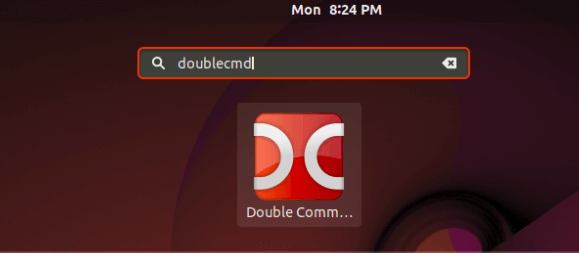

- #INSTALL DOUBLE COMMANDER UBUNTU 18.04 HOW TO#
- #INSTALL DOUBLE COMMANDER UBUNTU 18.04 INSTALL#
- #INSTALL DOUBLE COMMANDER UBUNTU 18.04 UPDATE#
If you see another IP address in that column ( 0.0.0.0, for example), then you should double check that you uncommented the correct line and restart the Redis service again.

This output shows that the redis-server program is bound to localhost ( 127.0.0.1), reflecting the bind setting in the Redis configuration file. Locate this line and make sure it is uncommented (remove the # if it exists): To correct this, open the Redis configuration file for editing: This is not as secure as binding to localhost. However, if you installed and configured Redis by following a different tutorial than this one, you might have updated the configuration file to allow connections from anywhere. Step 3 - Binding to localhostīy default, Redis is only accessible from localhost. Although these steps are optional and Redis will still function if you choose not to follow them, it is strongly recommended that you complete them in order to harden your system’s security. The remaining steps in this tutorial cover methods for mitigating these vulnerabilities, as prescribed by the official Redis website. However, some of its default configuration settings are insecure and provide malicious actors with opportunities to attack and gain access to your server and its data. With that, your Redis installation is fully operational and ready for you to use. If it is running without any errors, this command will produce output similar to the following:Įxit out into the shell again when you are finished: Start by checking that the Redis service is running: We will go over a handful of ways to check that Redis is working correctly in this step.

Step 2 - Testing RedisĪs with any newly-installed software, it’s a good idea to ensure that Redis is functioning as expected before making any further changes to its configuration. Before you begin using it, though, it’s prudent to first check whether Redis is functioning correctly. With that, you’ve installed and configured Redis and it’s running on your machine. Then, restart the Redis service to reflect the changes you made to the configuration file: That’s the only change you need to make to the Redis configuration file at this point, so save and close it when you are finished. # They do not enable continuous liveness pings back to your supervisor. # Note: these supervision methods only signal "process is ready." # UPSTART_JOB or NOTIFY_SOCKET environment variables # supervised auto - detect upstart or systemd method based on # supervised systemd - signal systemd by writing READY=1 to $NOTIFY_SOCKET # supervised upstart - signal upstart by putting Redis into SIGSTOP mode # supervised no - no supervision interaction # If you run Redis from upstart or systemd, Redis can interact with your Since you are running Ubuntu, which uses the systemd init system, change this to systemd: The supervised directive is set to no by default. This directive allows you to declare an init system to manage Redis as a service, providing you with more control over its operation. Inside the file, find the supervised directive. Open this file with your preferred text editor: Following this, there is one important configuration change to make in the Redis configuration file, which was generated automatically during the installation.
#INSTALL DOUBLE COMMANDER UBUNTU 18.04 INSTALL#
This will download and install Redis and its dependencies.
#INSTALL DOUBLE COMMANDER UBUNTU 18.04 UPDATE#
In order to get the latest version of Redis, we will use apt to install it from the official Ubuntu repositories.įirst, update your local apt package cache if you haven’t done so recently: Step 1 - Installing and Configuring Redis When you are ready to begin, log in to your Ubuntu 18.04 server as your sudo user and continue below. You can set this up by following our Initial Server Setup guide. To complete this guide, you will need access to an Ubuntu 18.04 server that has a non-root user with sudo privileges and a basic firewall configured.
#INSTALL DOUBLE COMMANDER UBUNTU 18.04 HOW TO#
This tutorial demonstrates how to install, configure, and secure Redis on an Ubuntu 18.04 server. Redis is an in-memory key-value store known for its flexibility, performance, and wide language support.


 0 kommentar(er)
0 kommentar(er)
